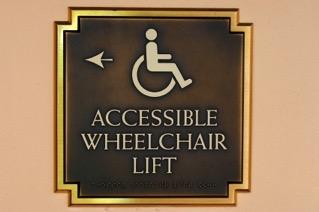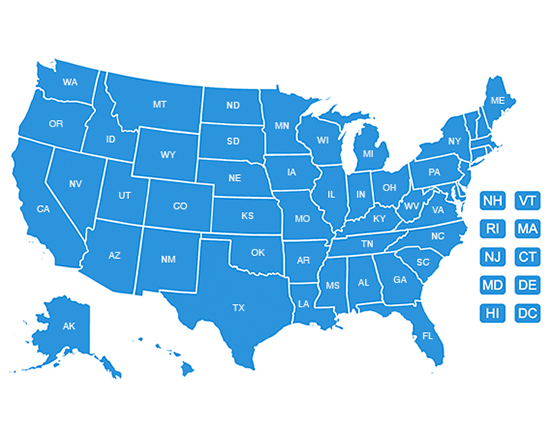The Nursing Home Law Center is committed to providing the legal resources necessary to hold negligent facilities accountable.
Understaffing in Nursing Homes
Understaffed nursing homes make it difficult to provide adequate care to residents. In return, residents are at risk of serious falls, infections, and other injuries. Despite state and federal standards that require nursing homes to follow minimum staffing standards, many fail to do so, leading to a dangerous environment.
Find out more about staffing requirements, including why some nursing homes struggle to meet these standards. Learn what legal options may be available if your care was impacted by the staffing issues at a nursing home. Nursing homes have a legal duty to protect residents and prevent understaffing, and when they don’t, they may be liable.

Understanding the Problem of Understaffing
Understaffing in nursing homes puts patients at risk. Yet, many nursing homes around the country continue to understaff their facilities. Here are a few surprising statistics to know about understaffing in nursing homes:
- Only 6% of the nation’s nursing homes meet all four staffing mandate requirements set by the Centers for Medicare and Medicaid Services (CMS) [1].
- Approximately 80% of nursing homes must hire more Registered Nurses (RNs) to meet new 24/7 staffing requirements [1].
- An estimated 87% of nursing homes have moderate or high staffing shortages [2].
- As much as 98% of nursing homes have difficulty hiring new staff members [2].
Understaffing can make it difficult for a nursing home to make money, which can lead to more closing their doors. However, it can also lead to lower-quality care, which ultimately puts the residents at risk.
CMS updated its staffing requirements in April 2024 to improve nursing home residents’ safety [3]. These revised requirements aim to overcome chronic understaffing.
Causes of Understaffing
There are various reasons skilled nursing facilities have difficulty hiring and retaining staff. Here are some of the most common reasons:
- Low Wages: Labor costs are among nursing home organizations’ highest expenses. As a result, nursing homes often pay low wages to increase profits.
- High Turnover Rates: Nursing homes have high staff turnover rates. Staff may seek alternative employment for better pay or improved working conditions.
- Inadequate Funding: Low funding from state or federal organizations stretches budgets and leads to lower labor costs.
- Low Employee Morale: Unsafe working conditions or minimal room for upward mobility can lead to low employee morale.
- Lack of Training: Minimal training programs can also lead to high staff turnover in nursing homes.
Understaffing in nursing homes can also lead the staff to work overtime, which also puts residents at risk. Employees working more consecutive hours for overtime pay are likely to make more mistakes, impacting residents’ well-being.
Impact on Residents
Nursing home residents are put at risk when skilled nursing facilities fail to staff properly. Residents are more likely to experience neglect, which could lead to fall injuries, worsening of medical conditions, and an overall lack of medical care.
Nursing home abuse is also more likely in nursing home facilities with understaffing. Overworked staff may take out their frustrations on residents. There may also not be enough nurses on staff to identify abuse or neglect among the residents.
Types of Nursing Home Staff and Their Roles
Properly staffing a nursing home requires many types of employees. Here are a few types of nursing home staff.
Registered Nurses
A registered nurse (RN) has a higher level of education and training than other nursing professionals and typically takes a supervisory role in nursing homes. RNs may assess residents, create care plans, and monitor patient care. They may also be in charge of other nursing home workers.
Licensed Practical Nurses
Licensed practical nurses (LPNs) complete certificate or diploma programs to learn patient care skills. In nursing homes, a licensed nurse may monitor vitals, assist residents with daily tasks, and communicate care plans with family members.
Certified Nursing Assistants
Certified nursing assistants (CNAs) primarily receive training to assist residents with daily tasks such as bathing, eating, mobility assistance, and taking medications. Many CNAs work underneath a licensed practical nurse or RN.
Other Staff Members
The nursing staff may include additional members, including therapists, dieticians, social workers, and facility administrators.
Mental health therapists may be on staff to assist residents with psychological conditions. Physical therapists can help residents regain mobility. Dieticians help residents with healthier meals customized to their unique needs.
Social workers may also be on staff in a nursing home to assist residents and their families with the transition or to access necessary resources. Nursing home administrators are also usually on staff to manage the day-to-day duties and to facilitate new admissions.
Minimum Staffing Requirements
State and federal guidelines have minimum staffing requirements for nursing homes. Here are a few things to know about nursing staff requirements.
Federal Regulations
Federal regulations, set by the Center for Medicare and Medicaid (CMS), require at least 3.48 hours per resident per day (HPRD). Of this requirement, at least 0.55 HPRD must be under the care of an RN and 2.45 HPRD from a nurse aide. Any staff members may fulfill the leftover 0.48 HPRD [4].
CMS recently announced a new requirement that all nursing homes must have an RN on site 24 hours a day, seven days a week. The date on which this requirement goes into place varies depending on the nursing home’s location. Nursing homes located in rural locations may have longer to fulfill this requirement to help account for short staffing.
Keep in mind that these standards change regularly. The most recent update to staffing standards was in April 2024. Health regulations also change frequently. For example, under the Affordable Care Act, nursing homes were initially required to turn in daily payroll documents to prove sufficient staffing and to prevent understaffing.
State Regulations
Some states may have more requirements. However, actual nurse staffing levels may vary depending on location and whether the state enforces requirements. Additionally, some states can file for a temporary hardship exemption that allows them to deviate from federal requirements.
Challenges in Meeting Requirements
Some nursing home owners have difficulty meeting these requirements. The nursing home industry has a long history of high staff turnover rates, usually due to low pay and minimal training. For-profit facilities may also stretch staffing budgets, which makes maintaining safe staffing levels difficult.
Consequences of Understaffing
Understaffing in nursing homes has many dangerous consequences. When nursing homes fail to maintain required nurse staffing levels, the following problems are more likely to occur.
Neglect and Abuse
Adequate staffing is an important strategy for preventing abuse and neglect in nursing homes. When assisted living facilities fail to meet nurse staffing standards, residents are more likely to be the victim of abuse or neglect.
Understaffing in nursing homes leads to residents not receiving the care they need. It also increases the risk of elder abuse, as staff don’t receive proper supervision. Residents may be at risk of physical, emotional, or financial abuse in nursing facilities that fail to meet the required staffing levels.
Medication Errors
Mistakes are also more likely in an understaffed nursing home. Staff are more rushed when completing daily care tasks, which could lead to medication errors. The number of hours worked can also contribute to more mistakes made. Staff who work eight consecutive hours or more without breaks may be more likely to make medication mistakes.
Falls and Injuries
Long-term care facilities that fail to meet minimum nurse staffing standards tend to have fewer fall-risk safety protocols in place. Residents may not be able to receive mobility assistance when transitioning, and attempting to transport themselves could lead to more fall injuries. Broken or loose equipment is also more likely to go unnoticed,
Pressure Ulcers
Nursing home residents are at risk of pressure ulcers in understaffed nursing homes. Fewer staff members are available to reposition bedridden residents, increasing the risk of developing pressure ulcers. Understaffing in nursing homes can also mean it takes longer for many residents to receive the care they need, such as for pressure ulcers.
Infections
Nursing home facilities without sufficient staffing levels also tend to have more residents with infections. Low staff levels can lead to poor treatment of current infections and minimal prevention strategies. Overworked staff are less likely to practice safe hygiene practices and follow guidelines.
Holding Nursing Homes Accountable
Nursing homes are required to meet minimum staffing levels to keep residents safe. They may be held accountable when they fail to hire, train, monitor, or retain staff.
Legal Rights of Residents
Nursing home residents have a legal right to proper care. According to CMS, a nursing home resident has a right to:
- Be treated with respect and human dignity
- Participate in activities
- Be free of discrimination
- Be free from restraints
- Make complaints
- Receive proper medical care
- Have their representative notified
- Get information on services and fees
- Receive proper privacy, property, and living arrangements
- Spend time with visitors
- Access social services
- Leave the nursing home as desired
- Have proportion from unfair transfer or discharge
Behaviors that limit these rights may be considered nursing home abuse or negligence. When negligence occurs, a staff member or specific nursing facility may be to blame.
Negligence and Liability
Negligence occurs when a medical care organization fails to meet a resident’s basic needs and rights. For example, a nursing home that fails to provide a safe environment, access to health care, nutritious meals, and proper medical services may be considered negligent. Nurse staffing levels directly impact the quality of resident care.
Seeking Compensation for Damages
A nursing home resident who suffers injury due to understaffing may be eligible for a civil lawsuit, which recovers financial compensation. Available damages in a nursing home lawsuit may include medical costs, lost wages, and pain and suffering.
When elder abuse or negligence in a nursing home leads to a loss of life, further compensation may be available through a wrongful death lawsuit.
How a Lawyer Can Help Nursing Home Residents
Nursing home understaffing directly impacts the quality of care residents receive. Legal representation is valuable when seeking compensation following nursing home abuse or neglect.
A successful nursing home negligence lawsuit will require sufficient evidence of liability and proof of injury. Working with an experienced nursing home neglect lawyer can help injured victims build a strong case.
The Nursing Home Law Center helps victims hold negligent nursing homes accountable while negotiating a fair settlement offer. You trust the nursing facility you choose to care for your loved one based on federal standards. When they fail to do so, and your loved one becomes the victim of nursing home abuse or neglect, it’s only right to seek justice.
Get a Free Consultation With a Nursing Home Attorney!
Were you or a family member impacted by nursing home understaffing? You may be eligible for a lawsuit, which helps recover damages.
Contact the Nursing Home Law Center for a free consultation at (800) 926-7565 or fill out our online form.
Resources: [1] American Health Care Association, [2] NurseJournal, [3] KFF Health Policy Organization, [4] American Hospital Association


